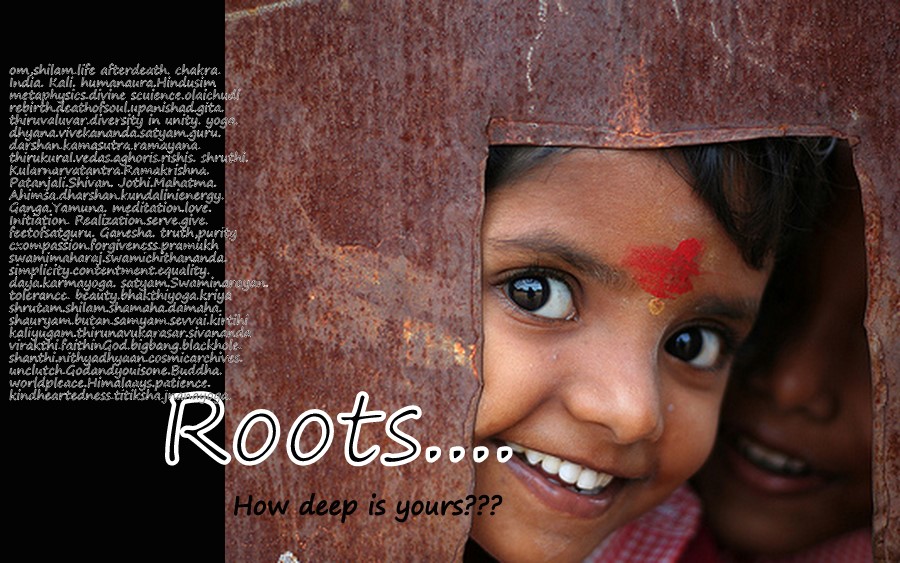When I was five, I used to go to the Sivananda Ashramam in Bt.Caves. It was my family's version of Sunday school. I hated it . I hated waking up on Sunday mornings. I hated the Thevaram, the Sangeetham and the Thirukural with every little bit of my heart. I was freaking five years old. Many times, I have prayed to God for him to vanish Sunday. Although I was earnest and very sincere in my prayers to the extent of tears at times, no such miracle happened. Perhaps Sunday was God's off day I thought. :)
Also every Sunday morning, we sisters will fight on who to bathe first and I remember crying in the toilet. I was scared because I know Thirukural Tata ( That's what we call our Thirukural teacher then because he was very very old and he slurred a lot) is going to embarrass us again because we did not memorize any new Kurals. Heck, I don't even remember the old ones. I used to think to myself " Enna, peserrare iverre? Onne me puriyilleya (What is he saying? I don't understand a thing). Worse still, I had no idea where the Thirukural book was. It's probably under the sofa or behind the tv. Somedays, we will purposely lose our books and search for it in the mornings to lengthen the time or hide the car keys somewhere ( This was criminal, I know but we were desperate) in the vain hope that my dad would not send us there because we were like 1 hour late. But I guess my dad knew us better. He still did us and again yet again like many other Sundays, we were the late comers. So we don't get our sweets or laddhu instead we get stared at and I guess from the beginning Thirukural tata never liked us anyway.
Untill today, I only remember the first Kural. Period. :p
There was one thing I liked though. It was a prayer we said it in Tamil. I had no idea what it meant then but I liked the sound of it. So I memorized it and said it regularly till I stop attending the "Sunday School".
About 15 years later, I heard this same prayer somewhere and I could recite it by heart. It sounded so familiar. It was then that I realized that this was the same prayer that was etched in my heart when I was five.
Now of recent times when I've actually understood the meaning of it, I realized just how beautiful it is.
I would like to share it with anyone of you who wants to pray universally.
This prayer is called the Universal Prayer and it was written by Swami Sivananda.
UNIVERSAL PRAYER
Oh, adorable Lord of Mercy and Love!
Salutations and prostrations unto Thee
Thou Art Omnipresent, Omnipotent, Omniscient;
Thour art Satchidananda (Existence, Knowledge, Bliss)
Thou art the In-Dweller of all beings
Grant us an understanding heart,
Equal vision, balanced mind
Faith, devotion and wisdom.
Grant us inner spiritual strength
To resist temptations and to control the mind,
Free us from egoism, lust, greed, anger, hatred and fear,
Fill our hearts with divine virtues
Let us behold Thee in all these names and forms
Let us serve Thee in all these names and forms
Let us ever remember Thee
Let us ever sing Thy glories
Let Thy Name be ever on our lips
Let us abide in Thee forever and ever
-Swami Sivananda-
I like the Tamil version of it :)
Karunaiyum anbum niraintha Iraiva,
Ella uyirhallilum udurvi, enggum nirainthe,
Sarva Vallamaiyum Porunthiya Sarvaknyanana Satchidananda
Paramporullam Ummai Vanangi Panihindrom
Meiporul kanum ullam,
Samanokku nillai petra manam,
Sirathai, bakthi, nyanam evaihalai engalukku arulvirahe
Anavam, kamam, perasai, kovum, verrupu,
Ivaihalilirunthe enggalai viduvithe
Enggal ulanggalil tooya theiviga gunangalai nirapuviraghe
Ella uruvangalilum peyarhalilum Ummaiye tarisithu sevvai seivom ahe
En Neramum Ummnaiye sinthipom ahe
En Drendrum Umathe pugahazlai paduvom ahe
Epothum engallathu naavinil Umathu thirunamam vilanguha
En Neramum Ummulley nilaipetru Vilanguvom Ahe.
Om Dat Sat.
So close your eyes, be still and pray for that is the only invitation that God needs from you.















.jpg)


